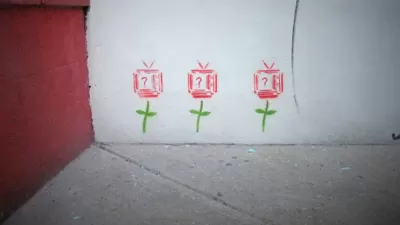The year-long program will begin in November, laying a foundation for a national carbon market.

Before launching a national carbon market in 2018, Mexico will undertake a 12-month carbon pricing demonstration project beginning in November of this year.
Regulators will recruit about 60 businesses to join the pilot, offering them the opportunity to provide input that could help shape the nascent cap-and-trade system. CleanTechnia offers a brief description of the current setup, which follows a fairly standard model:
This type of pricing scheme starts with officials setting a national limit that will bring down the levels of toxic greenhouse gas emissions from participating organizations. Regulators can then adjust the limit downward as the polluting entities comply and incorporate sustainable forms of renewable energy and industrial improvements. All participants can exchange tradable certificates to offset their emissions. Firms and other groups that lower emissions below their caps can then sell their excess allowances to other businesses that have not yet succeeded in holding to their own limits.
As part of the international climate accord reached in Paris last year, Mexico committed to reducing national greenhouse gas emissions by 22 percent by 2030, as well as to generating 50 percent clean energy by 2025.
FULL STORY: Mexico Will Launch Carbon Pricing In November

Alabama: Trump Terminates Settlements for Black Communities Harmed By Raw Sewage
Trump deemed the landmark civil rights agreement “illegal DEI and environmental justice policy.”

Study: Maui’s Plan to Convert Vacation Rentals to Long-Term Housing Could Cause Nearly $1 Billion Economic Loss
The plan would reduce visitor accommodation by 25% resulting in 1,900 jobs lost.

Why Should We Subsidize Public Transportation?
Many public transit agencies face financial stress due to rising costs, declining fare revenue, and declining subsidies. Transit advocates must provide a strong business case for increasing public transit funding.

Paris Bike Boom Leads to Steep Drop in Air Pollution
The French city’s air quality has improved dramatically in the past 20 years, coinciding with a growth in cycling.

Why Housing Costs More to Build in California Than in Texas
Hard costs like labor and materials combined with ‘soft’ costs such as permitting make building in the San Francisco Bay Area almost three times as costly as in Texas cities.

San Diego County Sees a Rise in Urban Coyotes
San Diego County experiences a rise in urban coyotes, as sightings become prevalent throughout its urban neighbourhoods and surrounding areas.
Urban Design for Planners 1: Software Tools
This six-course series explores essential urban design concepts using open source software and equips planners with the tools they need to participate fully in the urban design process.
Planning for Universal Design
Learn the tools for implementing Universal Design in planning regulations.
Smith Gee Studio
Alamo Area Metropolitan Planning Organization
City of Santa Clarita
Institute for Housing and Urban Development Studies (IHS)
City of Grandview
Harvard GSD Executive Education
Toledo-Lucas County Plan Commissions
Salt Lake City
NYU Wagner Graduate School of Public Service




























